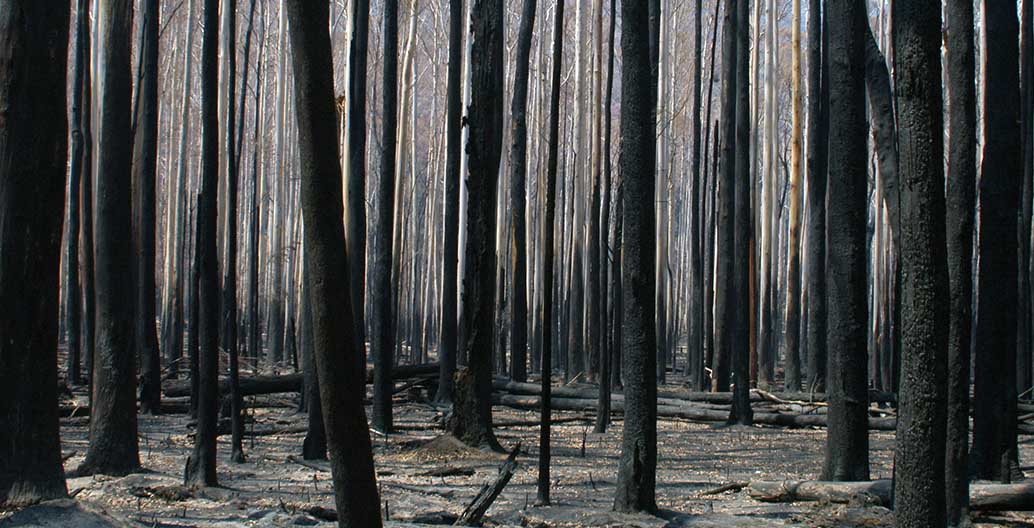
Australia’s bushfire catastrophe: The real problem isn’t ‘woke greenies’, but a refusal to plan for the worst
It’s time Australia’s federal government accepted that climate change is driving ever worsening weather extremes and that the country needs a practical and systematic plan of action to address them.
With Australian prime minister Scott Morrison’s announcement on Monday of a two billion dollar bushfire recovery fund, the Australian federal government appears to have finally recognised that the fires represent a national emergency that demands a national response. But with the country steeling itself for further tragedy as conditions worsen and the fire season deepens, questions are mounting as to whether or not more could or should have been done to prevent or temper the fires, given the clamouring warnings fire authorities and other experts have been issuing about the burgeoning threat.
Predictably, climate change skeptics have trotted out the usual red herring of ‘greenies’ blocking fuel reduction burns. This charge has been debunked, but as many have pointed out, the annual window to conduct fuel reduction burns is narrowing dramatically due to climate change. This is having an impact on our capacity to safely reduce fuel loads. As Jane Goodall put it in Inside Story earlier this week, “If politicians want to make pronouncements on such specialised matters as fuel reduction, they had better educate themselves in the physics and biochemistry of forest fires.” A good place to start, says Goodall, might be Catalyst’s excellent 2014 documentary, Earth on Fire.
Fire management is complex and hazard reduction has its limits, but as Brian Gilligan, the former head of the NSW National Parks and Wildlife Service, wrote in The Land at the beginning of December, the same “ill-informed commentary that passes for debate is rolling around again”. The two billion dollars in federal relief funds are much needed, but for Gilligan preparedness and prevention would have been a vastly better option than trying to retrofit protective measures in the middle of a crisis. As Gilligan writes, “Systematic analysis of practical options for adapting to ever worsening weather extremes driven by climate change is still on our collective ‘to do’ list.”
Gilligan is far from unusual in calling for co-ordinated planning and land management on this front. As the University of Melbourne’s Rod Keenan wrote in The Conversation, the royal commission into Victoria’s Black Saturday bushfires identified serious shortcomings in state-based land and fuel management nearly a decade ago. Little has changed since. As Keenan describes, “[i]t is as though Australia suffers collective and institutional amnesia when it comes to bushfire preparedness. But the threat will only escalate. Australia must have a sustained commitment to better land management.”
The emphasis here shouldn’t solely be on the way we plan and manage our parks and fire services, either. There are also serious problems with Australia’s patterns of settlement. Urban growth is pushing more and more people into housing within the rural/urban interface in Australia, and many of these newly ruralised communities are also inexperienced with bushfire. Over 3.3 million people—25 per cent of Australia’s metropolitan population—currently live in 24 fast-growing local government areas on the edge of Australia’s major cities, with this population predicted to grow to 4.5 million by 2021.
Some insurance analysts estimate that the number of “uninsurable” addresses in Australia will double to nearly one in 20 by the close of the century if nothing is done to address escalating risk from extreme weather and climate change. As the Planning Institute of Australia points out, urban development patterns need to be managed so that they’re not exposing Australians to climate change and disaster risk.
Finally, Australia would do well to look to the hard-won learnings and experience of its own people – both in terms of traditional knowledge and more contemporary forms thereof. As ANU’s Professor Tom Griffiths writes, “It is essential for our survival and our culture that Australians learn a fine-grained, local language of fire, such as Aboriginal Australians developed over millennia.” Unsurprisingly, there is a burgeoning interest in traditional fire management techniques within Australia. But there are also positive movements by some of Australia’s farmers to adapt more recent practices of permaculture and other forms of regenerative agriculture to rehydrate Australia’s landscape. As the Mulloon Institute’s Gary Nairn describes, “In getting a rehydrated landscape you become more resilient to fire, drought, [and] it also mitigates some of the flooding aspects. It’s all about slowing the water down, holding it in the landscape longer.”
This is important work of long-term vision that promises a more economically and environmentally sustainable approach to land management in Australia. Lest the more reactionary elements of Australia’s political landscape get the wrong idea, though, and paint this as another mad scheme by ‘woke greenies’, we should also point out that Nairn is a former minister from the Howard government.


